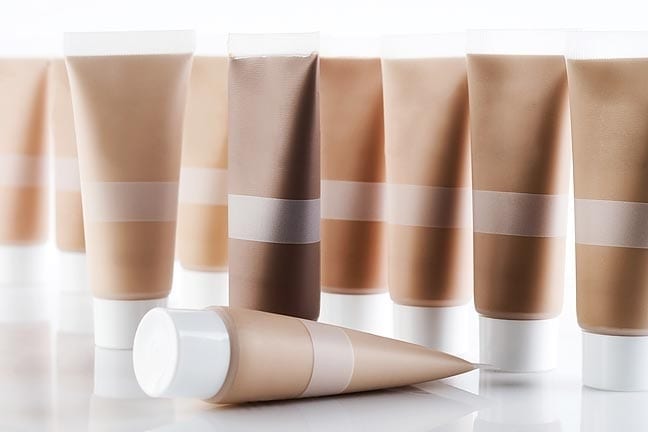The term “cosmeceuticals” has been used for about 20 years to define skincare products with pharmaceutical-like benefits; it’s the intersection of beauty and medicine.Many anti-aging products fall under the cosmeceutical umbrella because they are specifically designed to deliver benefits that traditionally could only be done in the medical field (like via Botox and facelifts). While no product coming out of a jar, pump or tube could ever duplicate the effects of a facelift, they do offer a less invasive alternative to those who desire to look as young as they feel.COLUMN: Three “Anti-Agers” You Don’t NeedClaims are the driving force behind all beauty products—but especially cosmeceuticals. They’re how marketers explain what a product is, what it does and why you need to buy it. Ideally, claims should be clear and concise so you know exactly what you’re buying into. However, that’s a difficult task with cosmeceuticals since many ingredients used in anti-aging products have drug-like activity.Before we go any further, I think that it’s important to identify the difference between drug and cosmetic claims. Shedding light on the differences can help you understand the plight of the marketing professionals who have the task of touting all of the product benefits, without crossing over into drug territory.According to the FDA, drugs are products—not including food—intended to diagnose, cure, treat or prevent disease, as well as products intended to affect the structure or any body function in humans or animals. Cosmetics, on the other hand, are products introduced to the body with the intention of cleansing, beautifying, promoting attractiveness or altering the appearance. The FDA does not recognize the term “cosmeceutical;” in the eyes of the FDA a product is a drug, cosmetic or both. QUIZ: Is Your Skin Healthy?
Vocabulary FYI
The FDA does not recognize the term “cosmeceutical”; in the eyes of the FDA a product is a either a drug, a cosmetic or both.
Confusing? The difference is with the first claim, I am changing the structure of skin by directly reducing the wrinkle; with the second claim I am only changing the appearance of the wrinkle, and that does not involve changing the structure of the skin.What does this all mean and how does it affect product claims? Let’s use wrinkles as an example. A wrinkle is a crease in the skin; skin is a structure in the human body. If I create an anti-aging serum intended to reduce wrinkles, then the FDA will classify it as a drug because it intentionally affects the structure of the body. But—and here is where the border becomes fuzzy and gray—if I create an anti-aging serum intended to reduce the appearance of wrinkles then it’s a cosmetic because I am altering the appearance without the intention of affecting the structure.A cosmetic is a “surface” treatment and can only alter the appearance—just think of how the hands of a skilled makeup artist can use foundation and concealer to create a flawless complexion!MORE: Makeup for Flawless SkinSo how does a company navigate through the gray area of claims? Many companies rely on “soft” claims or claims that make very general statements to describe the product. Soft claims make it easier to set consumer expectations without gaining unwanted attention from the F.D.A. The problem with soft claims is that they can sometimes be so vague or “soft” that they really don’t mean much at all.Below we will explore claims from the labels of actual beauty products to see how the claim game is played!The Claim: Repairs the appearance of past damage.The Truth: This claim is too vague. What kind of past damage does it repair the appearance of? Are we talking sun damage, acne damage, not-having-a-skin-care-in-the-world-until-it-was-too-late damage? This claim leaves too much to the imagination and some may be disappointed if their ideas of damage and manufacturer’s idea of damage are not the same.The Claim: Addresses damaging effects before they become permanent.The Truth: This is a soft claim. What they really want to say is the product repairs the damage before it becomes permanent.The Claim: You’ll see a visible improvement in the signs of aging—specifically lines, uneven skintone and immediate hydration.The Truth: This is a definite claim. It is clear and gives some indication of which areas to expect improvement.The Claim: Our advanced technology repairs the appearance of damage caused by every major environmental assault. The Truth: This claim is too vague. Translation: Our advanced technology repairs damage by environmental factors like UV, pollution and extreme temperatures.The Claim: Skin’s levels of moisturization increase dramatically.The Truth: This is a soft claim. Any product that contains water will increase the moisturization level of your skin instantly. This would be a stronger claim if they indicated how long the increase in moisture lasted.The Claim: Nighttime skincare that boosts the activity of genes.The Truth: This claim is walking the fine line between drug and cosmetic—boosting the activity of genes is affecting the body function so one can argue that this product is a drug.MORE: Stem-Cell Skincare: Too Good to Be True?The Claim: Intensively fortifies skinThe Truth: This claim is too vague. It seems intriguing but in actuality it doesn’t really tell you what to expect from the product.Knowing how to read claims can help you make the better product purchases. Remember, although anti-aging products are cosmeceuticals, they are not drugs. These products can offer benefits like reducing the appearance of fine lines and wrinkles, improving skin hydration and evening out the skintone; but surgical benefits result from surgical procedures so please manage your expectations!




































